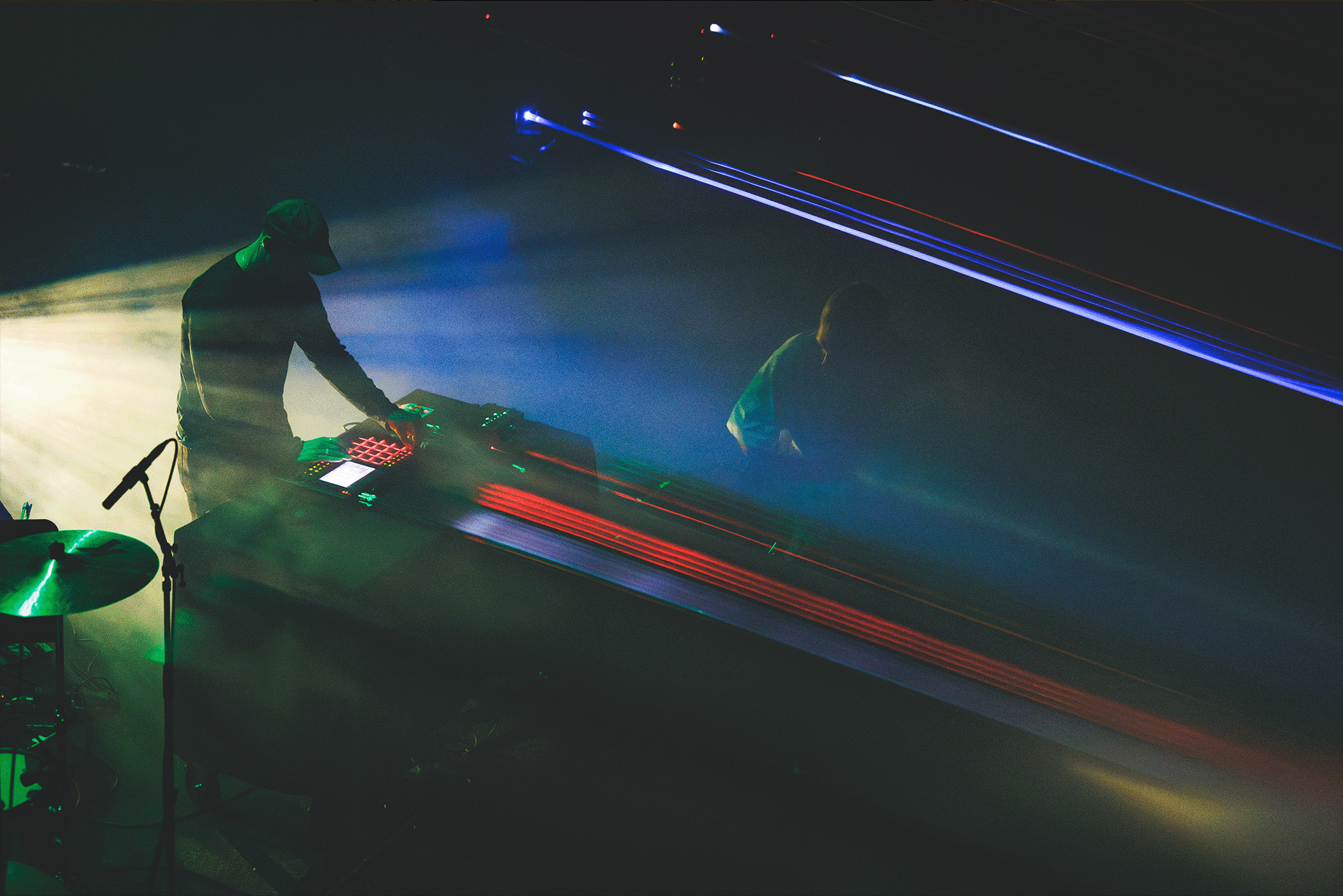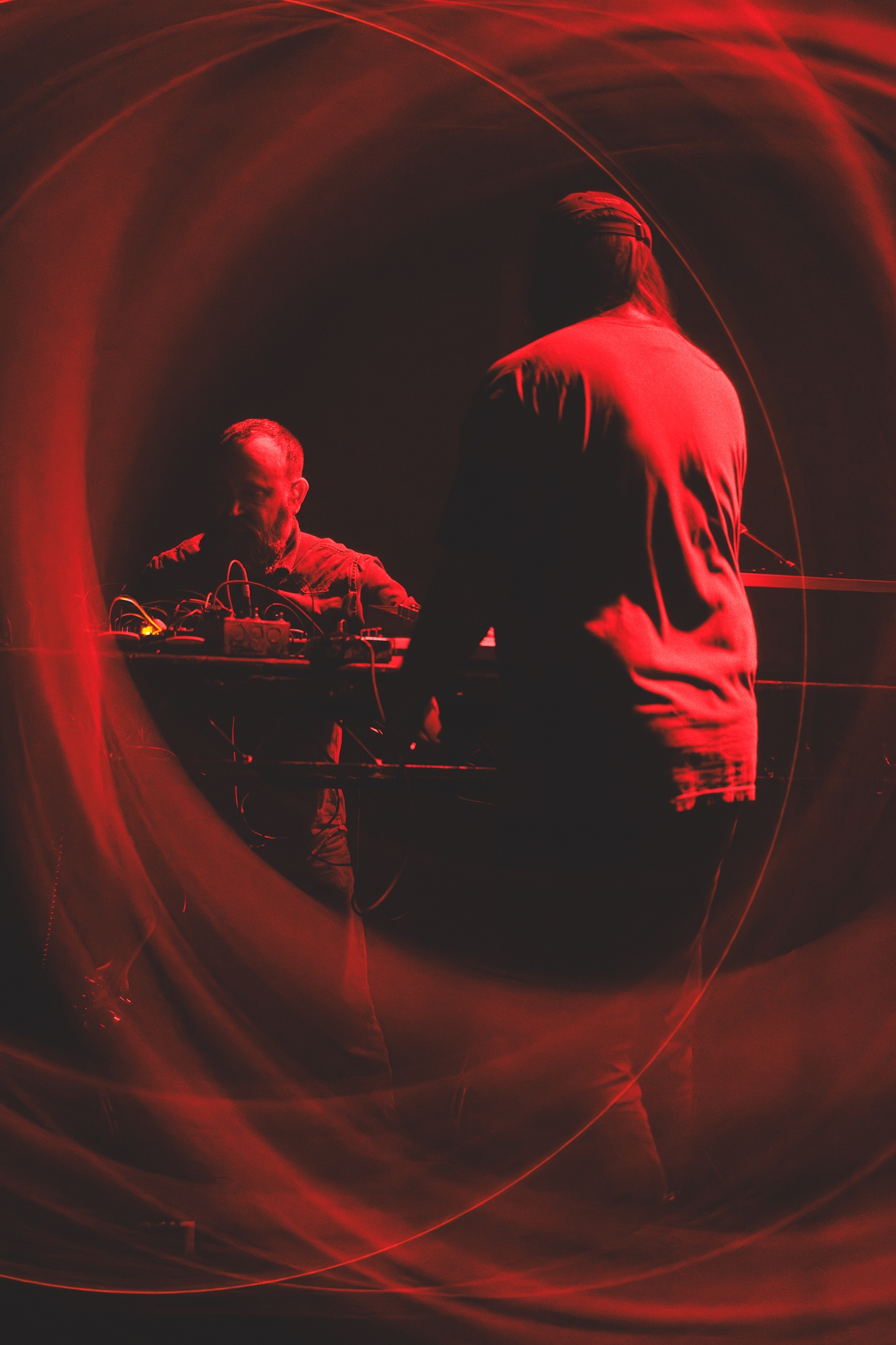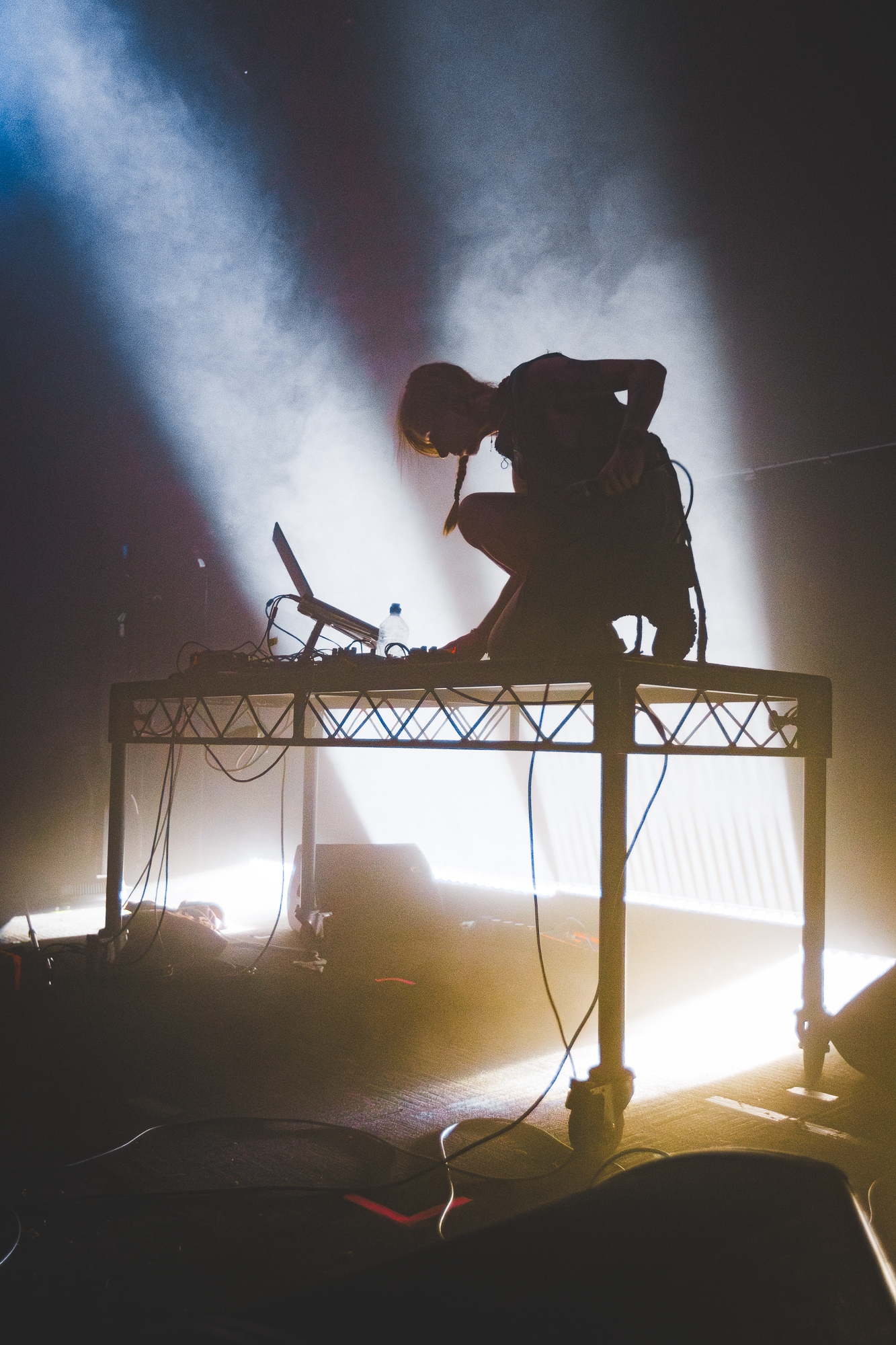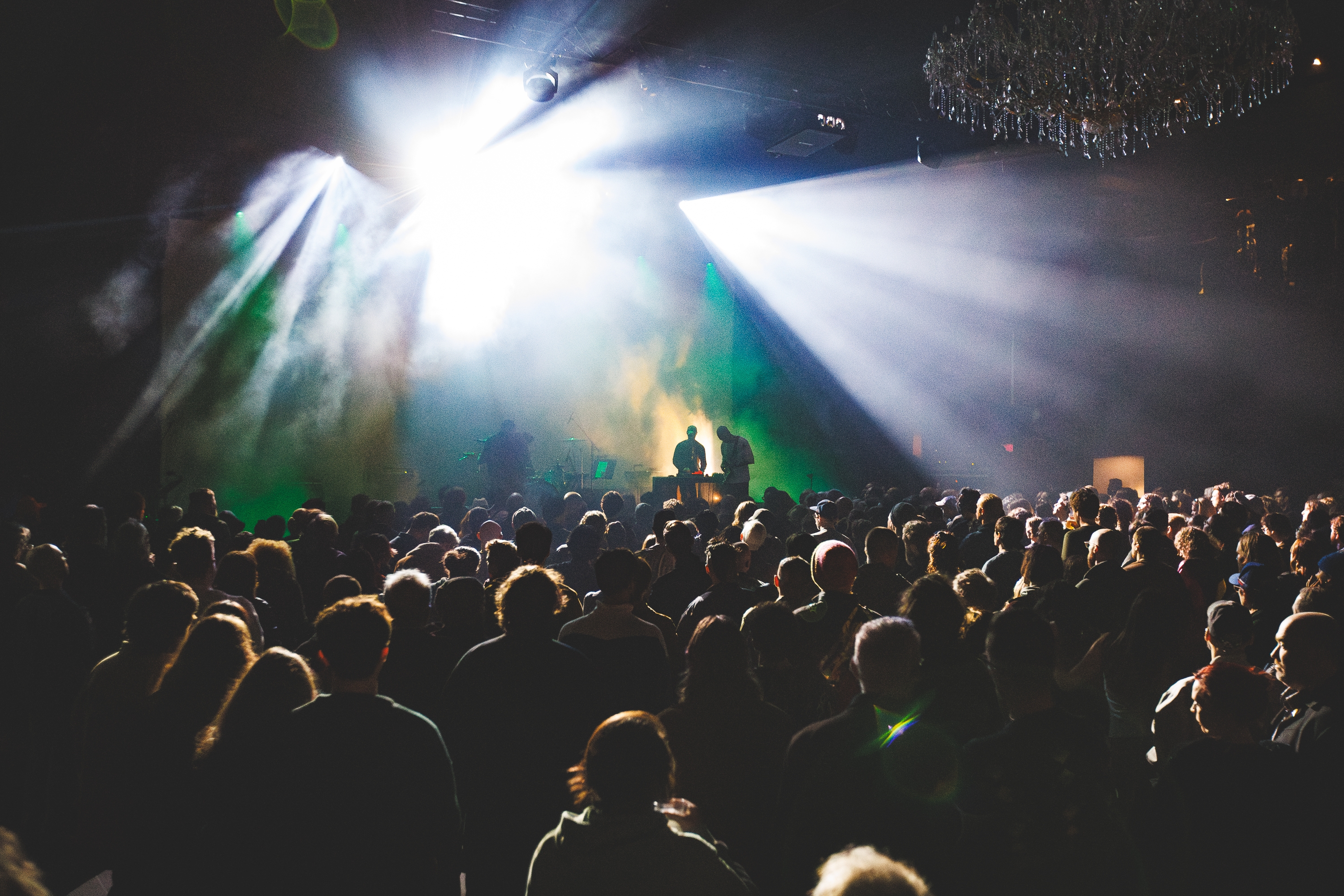 SCENE REPORTS
SCENE REPORTS
The pure spirit of Unsound Adelaide
Australia’s cult experimental music weekend ditches branding to focus on the most mind-expanding music anyone can hope to hear, and still has fun while doing it.
This past weekend, hiding in the shadows of the family-friendly Illuminate Adelaide light festival, was Unsound – a bounty of experimental music beloved by its devotees. Somehow, Unsound still flies under the radar on the Australian music calendar, despite over a decade in its Adelaide incarnation, and longer still since its founding.
First staged in Wagga Wagga in 2000 by current artistic director Mat Schulz's brother and friends, the festival has made Krakow, Poland, its primary base since 2003. There, it now pulls over 25,000 fans of weird and wonderful performances annually. It’s one of the most influential events of its kind in Europe. Schulz and his co-artistic director, Gosia Plysa, frequently stage international satellite events, like the one in Adelaide.
Unsound is not exclusively an electronic music festival, but given electronic music’s experimental origins, sounds made by turntables, digital files, circuits, chips, and samples feature prominently, often augmenting traditional instruments. This is precisely how Unsound Adelaide got going in 2025 at Lion Arts Factory, with the Italian virtuoso percussion experimentalist Valentina Magaletti, and the Afro-Portuguese producer and DJ, Nídia, performing tracks from their 2024 album Estradas, live.
With Magaletti on marimba and assorted percussion and Nídia providing the electronics, the pair took the audience straight into a world of polyrhythmic dance, speaking to the long history of Euro-African migration. With the most recent wave of migration out of Africa into Europe entering its second decade, the performance highlights the fallacy of right-wing European political parties claiming their countries exist in a vacuum of ethno-purism, rather than consisting of the fluid cultural groupings they’ve always been, for thousands of years.
Shulz and Plysa’s programming on night one veered wildly across continents, stopping next in South America, with the Bolivian-American siblings Chuquimamani-Condori and Joshua Chuquimia Crampton, performing as Los Thuthanaka. Chuquimamani-Condori has built a deep catalogue of electronic Andean folk music.
The pair share Aymara heritage, Indigenous people spread across the Andean ranges and plateau, including parts of what are now Argentina, Bolivia, Chile, and Peru. Chuquimamani-Condori has in the past referred to the Aymara concept of taypi, literally meaning ‘centre’, but metaphysically, it can be crudely summarised as a folding of space, time, the known and unknown.
Their sound is overwhelming in its majesty.
Its dense waves of guitar and electronics breathe with a wind-like sound emulating Bolivia’s towering, 4,920 m high Taypi Qullu mountain, and what sounds like cicada samples, or some synthesised approximation of them, bringing to mind the source creature’s up to 17-year gestation, when it emerges from the dirt in its newly winged, cacophonic form.

PICTURED: YELLOW SWANS, PHOTO BY: KERRIE GEIER
Next, we’re taken to the Pennine region of the North Atlantic, billed as such but perhaps more commonly referred to as Northern England, when Aya comes bounding out, a gregarious ball of energy ready for a chat: “I’ve been travelling all over the world saying all kinds of shit.”
Performing tracks from her excellent Hyperdub album hexed!, the tracks contort and shred themselves, they bubble and threaten to combust like potassium hitting water, or like a music box being wound backwards and repeatedly smashed with a mallet (“I dedicate that piece of music to my ex-girlfriend’s dog… they’re not dead yet.”) Aya’s raving banter takes in obscure New Zealand dubstep groups, Noisia and neuro drum and bass. In March, the Guardian’s Alastair Shuttleworth described the album as “nightmarish, alien”, but that’s really a matter of perspective, and one seemingly from the view of an outsider looking in. As much as the music at Unsound can be intense, it doesn’t dominate or alienate, and Aya’s performance plays like a cathartic howl of freedom from the unevenly applied strictures that societies place on certain bodies and minds.
The night’s live sets close out with Yellow Swans, the mid-00s improvisational noise duo, who have reformed in the last couple of years through an archival project of their old work. Another colleague was brought to tears by their emotional tsunami of static, and band member Gabriel Mindel expressed a genuine thankfulness to be there, making a shout-out to Aya, with whom they visited wallabies earlier in the day. Connections are what it’s all about at Unsound, cultures and continents, analogue and electronic disciplines, a noise band and a post-dubstep maniac.
Friday night’s DJ sets kick off a theme of the weekend, in which performers make multiple appearances. The UK producers Raime (who will return the next night with Magaletti as their group Moin) split their DJ set half each, with Tom Halstead nodding to the dub and dancehall influences of their sound, and Joe Andrews following with upbeat drum and bass. Nídia does away with the breakbeats in favour of rhythmic kuduro and an overwhelming upswell of deep, rich bass.
In the words of one nearby dancer: “I don’t know what this is, but it’s powerful!”
One of the great things the genre switching throughout the night enables is just that. It lets Paul Gorrie, DJ PGZ, completely switch the vibe, upping the bpm, the snares, and the entire energy of the room. And then, out of nowhere, dropping the Burial classic ‘Near Dark’, reminding you that it’s incredible to hear Burial on a PA instead of just in your headphones, on a tram, pretending you’re on a London night bus.

PICTURED: AYA, PHOTO BY: KERRIE GEIER
Saturday moved to Hindley Street Music Hall, opened by Wolfgang Voigt, surely one of the most influential figures in electronic music, from his co-founding of Kompakt to his own productions under over 30 monikers, here playing one of his most beloved projects, GAS. From rich bass, rises organ-like synthesisers and a pattering of cymbals, which sound like they’re being played forward then and backwards, from strike to reverberation and back again. Industrial chugs emerge, like a steam train entering your dreams. Blanketing the massive screen are close-up, layered images of a forest floor, which eventually zoom out to reveal an impressionistic rendering of a light-filled woodland. Despite the electronics, the music feels old, primal, pre-human, holy and sacred. Let’s call it Pan’s Labyrinth ambient-techno.
The chug and cymbal work from Voigt’s set carries through into Magaletti’s playing for Moin. Rave-era-like vocal snippets are not too dissimilar from the Burial PGZ dropped the previous night.
Again, connections. Is the influence flowing from dance music to post-punk or back the other way?
Good music has always been like this. So when Velvet Underground founding member John Cale closes out the live portion of the night with a set that on the surface is the least relevant to a electronic-inclined audience, one must still recognise how the Velvet Underground’s ‘Heroin’, with its squalls of guitars, Cale’s electric viola and abandonment of pop music’s verse-chorus structure for stream of conscious lyrics, has done as much to influence noise music and trance-inducing electronic music as anything else.
*(For the record, he didn’t play ‘Heroin’ but the mind does wander.)
When the action moved over the road for the night’s DJ sets to the Adelaide institution, Ancient Worlds, the transition was a welcome reset, missing on Friday. Down a spindly set of stairs with roof beams barely clearing the heads of the room’s taller dancers, Skorpion King was in full dubstep rinse mode, shouting out the “Trans baddies” losing it in front of the booth: “It’s the right amount of stink in here for a dubstep gig. Love to smell ya.” Ancient Worlds has the DIY, rough-and-ready community feel of the best clubs, which received approval from Plysa on the dancefloor: “This feels like Krakow.”
Chuquimamani-Condori came on next under their DJ E guise, abandoning the EDM for a blissful layering of pop music and psychedelia. Like the previously mentioned Taypi concept but applied to the tuning dial of an AM radio passing through stations on a road trip of the soul: the instrumental from The Who’s ‘Baba O’Reily, a Kelela remix, the vocals from Shania Twain’s ‘You’re Still the One’. Undoubtedly, this was the most rewarding DJ set of the weekend, truly singular in vibe, technicality, imagination and vision.
This should take nothing away from Aya’s follow-up set of club bangers, which felt decidedly more approachable than their live set, but no less fun for it. Or from Strict Face’s trips into dubby techno, waves of glitches, proggy breakbeats and ricocheting electro.

PICTURED: MOIN, PHOTO BY: KERRIE GEIER
What makes Unsound special is its simple presentation. Festivals in Australia are often preoccupied with branding, narrative and aesthetic identity. They need to sell tickets; it’s understandable. At the innocuous end, Meredith Music Festival self-mythologises with its largely imaginary “no dickhead policy,” while Soft Centre presents a grimdark techno landscape with real thought behind it. Pitch Music and Arts constructs extravagant stages and trippy visual art, often dwarfed by doof stick memes.
And then there’s Dark Mofo, no doubt inspired in some way by Unsound, which presents subcultures to a massive audience that wouldn’t otherwise engage with them, under the window dressing of red, black, blood and crucifixes. It’s a lot of fun, but its motivations are also often unclear and questionable. Dark Mofo frequently feels like it presents marginalised cultures and identities as a credential-bolstering exercise; it’s about subcultures, not necessarily for them.
All of this is in stark relief to Unsound Adelaide. There’s no props or roving performers, no sense of trademarked colour palette, and because of that, artists can flourish solely through their art, or in the audience, on their own terms. Unsound is pure of heart, mind, intention and spirit – built entirely around a love of experimental music, no more, no less. There’s just a stage or DJ booth, which every year is filled with some of the most mind-expanding, hopeful, genuinely surprising music anyone can hope to hear. It’s still an extremely fun time. And what a bloody relief that is.
-
Nick Buckley is a freelance writer living in Naarm/Melbourne, find him on Instagram.


